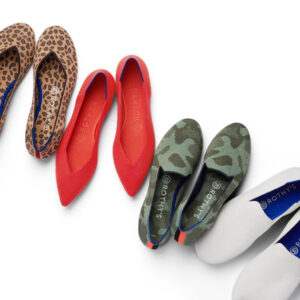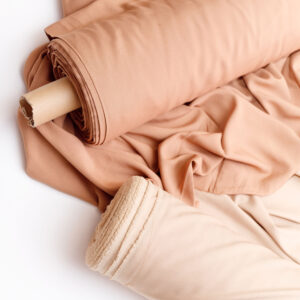In various industries, demand is increasing for products that blend eco-friendliness with durability and style. As consumers demand eco-conscious options, manufacturers are finding new ways to meet these needs—one being the remarkable rPET fabric. Derived from recycled plastic water bottles, rPET (Recycled Polyethylene Terephthalate) is shaking up the textile and packaging industries, offering brands an innovative way to reduce waste and meet sustainability goals without sacrificing quality.
What Is rPET Fabric?
RPET fabric is a sustainable material made by recycling plastic bottles, primarily water bottles, into a versatile textile. Unlike traditional polyester (virgin PET), which requires a petroleum-based process, rPET uses already-existing plastic materials, giving discarded bottles a second life as fabric. This method reduces the use of new resources and helps prevent plastic waste from ending in landfills and oceans.
The rPET process involves collecting, sorting, and cleaning plastic bottles, which are melted and turned into fibers. The fibers are transformed into yarn, woven into fabric, and crafted into a diverse range of products. RPET fabric is used across numerous industries—from packaging to fashion—highlighting its adaptability and efficiency.
The Manufacturing Process of rPET Fabric
- Collection and Sorting: Plastic bottles are gathered and sorted by type. Only high-quality plastics are selected to ensure the durability of the end product.
- Cleaning and Shredding: After sorting, the bottles are thoroughly cleaned to remove all residues and labels. They’re then shredded into tiny plastic flakes.
- Melting and Extrusion: These plastic flakes are melted and formed into fibers.
- Spinning and Weaving: The melted plastic is spun into yarn and woven to create fabric. This fabric is strong and durable and ready to be manufactured into various products.
This detailed process is part of why rPET is so highly regarded: it offers a tangible way to upcycle plastic waste into a valuable material, supporting sustainability initiatives with practical, stylish, and functional end products.
Why Choose rPET Fabric? Key Benefits for Businesses and Consumers
Choosing rPET fabric isn’t just a sustainable option; it’s also a practical one for businesses and consumers alike. Here’s what makes it a smart choice:
- Environmental Impact: Choosing rPET lowers the need for virgin materials, helping to reduce landfill waste and greenhouse gas emissions linked to virgin polyester production. It’s estimated by Science Direct that rPET produces 50% less energy and emits 70% fewer greenhouse gasses than traditional polyester.
- Durability: Even though it’s recycled, rPET matches the strength of virgin polyester. It’s weather-resistant, making it ideal for items that must withstand wear, such as reusable shopping bags, apparel, and durable packaging materials.
- Versatility: rPET adaptability means it’s popping up in everything from fashion to packaging. Whether a shopping bag or a product package, rPET can easily be styled, printed, and customized to reflect a brand’s identity.
Products crafted from rPET fabric are proving to be high-quality, high-performance, eco-conscious items—a win-win for businesses looking to engage sustainably minded consumers.
RPET vs. Traditional Fabrics and Other Recyclable Fabrics
How does rPET hold up against traditional fabrics like cotton or standard polyester?
- VS Traditional Polyester: rPET offers the same durability as polyester but with a lighter environmental impact due to its recycled origin.
- VS Cotton: Cotton may be a natural fiber, but it requires substantial water to cultivate. In contrast, rPET repurposes waste materials, reducing the need for fresh resources.
RPET provides a unique balance of strength, versatility, and environmental benefits compared to other recycled or sustainable materials, making it a favorite choice across industries.
Practical Uses of rPET Fabric in Today’s Market
RPET fabric has found its way into various products across multiple industries, and its popularity keeps growing. Here’s a look at where you’ll find RPET in use today:
- Fashion: rPET fabric has become a go-to sustainably for everything from T-shirts to jackets and accessories. Its durability makes it an ideal material for long-lasting wearables.
- Packaging: At Prime Line Packaging, we can use rPET for a variety of packaging solutions; from shopping bags to custom packaging, rPET can be printed on, making it functional and customizable.
- Home Goods: rPET’s strength and flexibility make it a valuable material for various household items, including blankets, pillows, and storage containers.
Selecting rPET means that brands are showcasing their commitment to sustainability, aligning their products with the values of modern, eco-conscious consumers.
Challenges and Considerations in Using rPET Fabric
Though rPET packaging offers many advantages, a few potential challenges should also be considered:
- Quality Variations: Recycled materials differ in quality, and rPET’s durability can fluctuate based on the recycling method used. Ensuring consistency across batches can be challenging, though quality control processes help address this.
- Cost Factors: The recycling process, mainly sorting and cleaning, can add cost, although these are balanced by the material’s quality and the brand’s sustainable appeal.
- Market Misconceptions: There’s a common misconception that recycled materials are less durable. Educating consumers on rPET’s strength and resilience can help dispel these myths.
Prime Line Packaging tackles these challenges by partnering with high-quality, reliable manufacturing facilities to ensure that our RPET products maintain excellent quality.
What’s Next for rPET?
With rising consumer awareness and demand for sustainable products, the outlook for rPET and recyclable fabrics is bright. Advances in recycling technology are expected to enhance both the quality and affordability of rPET, making it more accessible for businesses and consumers.
With more brands taking responsibility for their environmental impact, rPET and similar recycled materials are poised to play a significant role in tomorrow’s marketplace. Companies that embrace these materials will likely enjoy stronger customer loyalty, setting a foundation for long-term success and sustainability.
Is rPET the Right Choice for Your Brand?
RPET fabric offers brands a chance to make an eco-friendly choice without compromising on quality or versatility. With options available for everything from packaging to apparel, rPET is a valuable player in the sustainable materials arena. As consumers become more mindful of their purchases, using rPET can help brands stand out as leaders in sustainability and innovation.
Ready to Make the Switch to Sustainable Packaging?
Contact Prime Line Packaging to learn how we can help incorporate these rPET products to bring sustainable solutions to your brand. Durable, eco-friendly, and stylish, these products make it easy to package responsibly and engage with the values of today’s conscious consumer.










